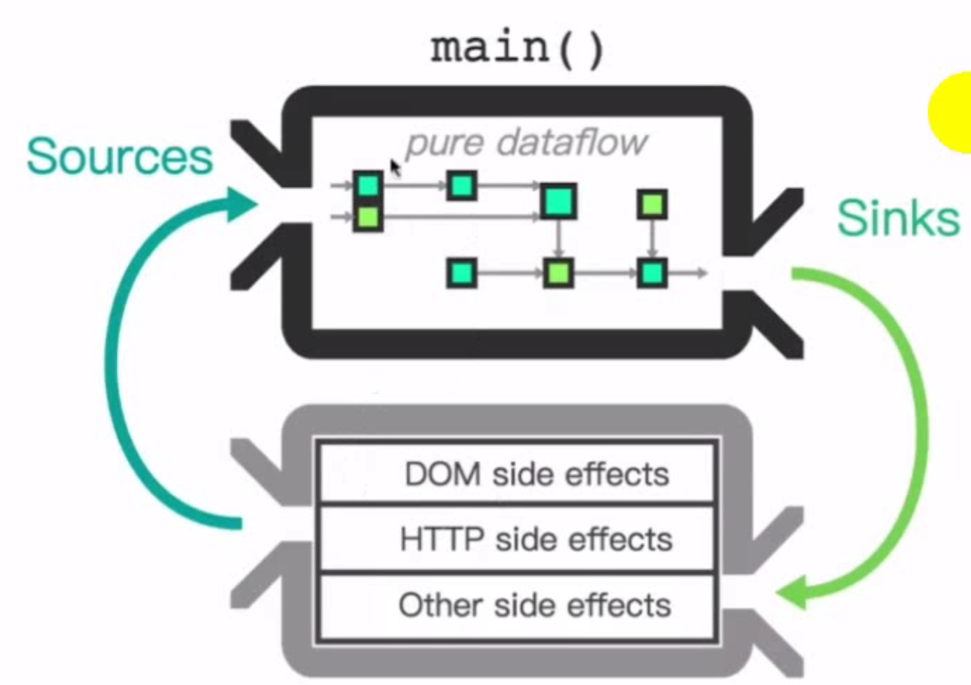一、Effects概念
有些Action改变的是外部状态,比如发送HTTP请求,DOM更改。

把Action看成流的话,跟UI相关的数据处理是Reducer,和UI相关的状态之外的叫Effects。
一个系统就分为Action和Reducer,一个Action出来后可能会改变数据的状态,也可能带来外部的影响,这些外部影响处理完之后可能又会发出一个新的Action。
可以循环往复,任意拼接。
二、代码
1,新建AppEffectsModule
@NgModule({ imports: [EffectsModule.forRoot([QuoteEffects])], }) export class AppEffectsModule { }
2,把AppEffectsModule导入CoreModule
3,写quote.effects
Effects可用用service的模板来建,因为它可以注入。
在effects的构造函数中注入action$流。
写第一个effects处理Load action:
监听action流,捕获到action,把service调用起来,成功的时候发射加载成功的action,失败的时候发射加载失败的action。
quote$ = createEffect(() => { return this.actions$.pipe( ofType(actions.LOAD), switchMap(_ => { return this.quoteService.getQuote().pipe( map(quote => new actions.LoadSuccess(quote)), catchError(error => of({ type: actions.LOAD_FAIL, payload: JSON.stringify(error) })) ) }) ) });
ofType捕获,筛选什么样的action。
The Effect decorator (@Effect) is deprecated in favor for the createEffect method. See the docs for more info https://ngrx.io/guide/migration/v11#the-effect-decorator
4,在login中调用
之前quoteService$就不需要了。
this.quoteService$.getQuote().subscribe(quote => { this.store$.dispatch({ type: actions.LOAD_SUCCESS, payload: quote }) })
增加一个,发出第一个LOAD action即可。
this.store$.dispatch({ type: actions.LOAD })
做到,把程序逻辑从组件中剥离出来。组件只需要在恰当的时间发送action即可。
2021-03-22


